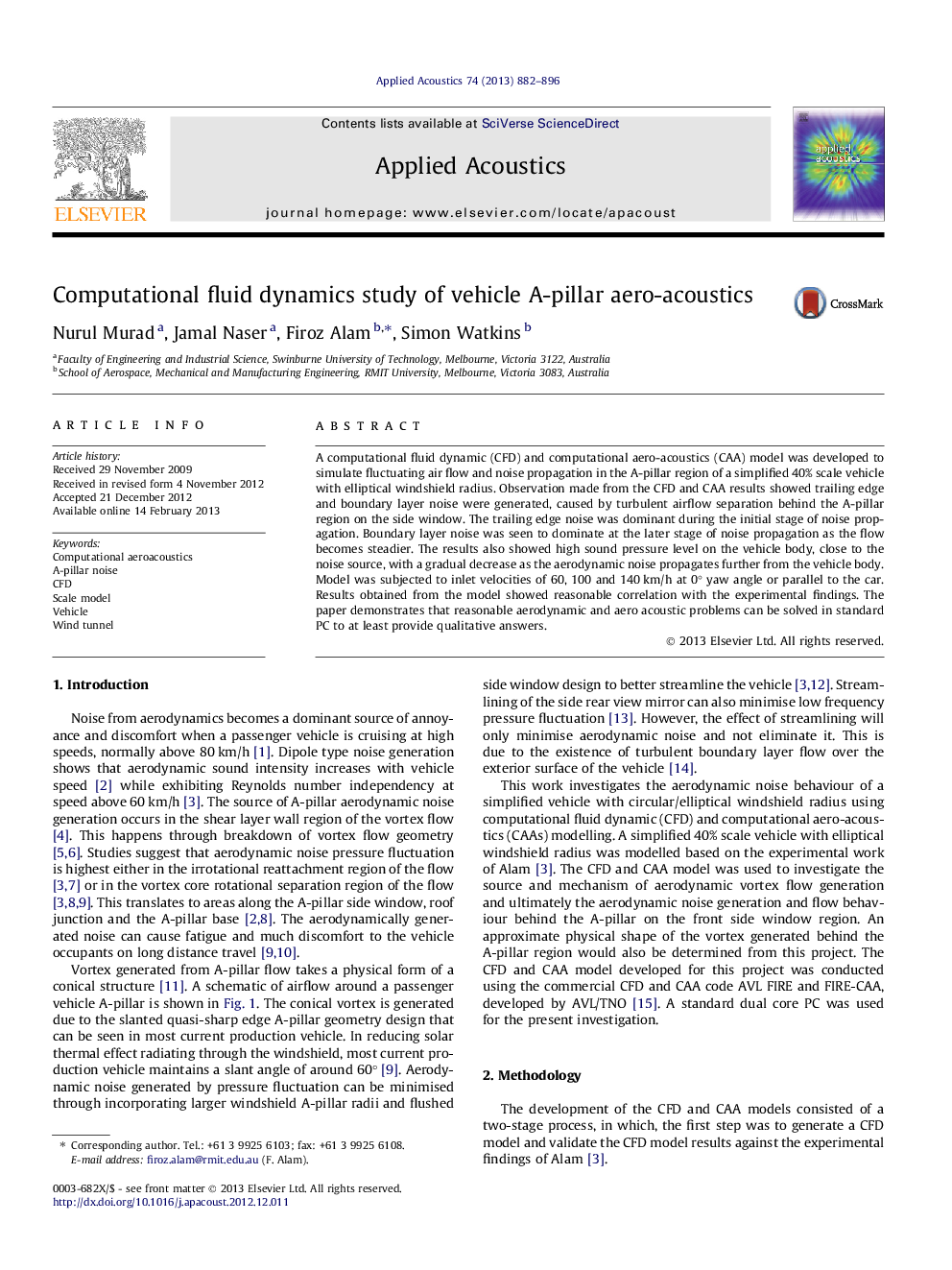| Article ID | Journal | Published Year | Pages | File Type |
|---|---|---|---|---|
| 754334 | Applied Acoustics | 2013 | 15 Pages |
A computational fluid dynamic (CFD) and computational aero-acoustics (CAA) model was developed to simulate fluctuating air flow and noise propagation in the A-pillar region of a simplified 40% scale vehicle with elliptical windshield radius. Observation made from the CFD and CAA results showed trailing edge and boundary layer noise were generated, caused by turbulent airflow separation behind the A-pillar region on the side window. The trailing edge noise was dominant during the initial stage of noise propagation. Boundary layer noise was seen to dominate at the later stage of noise propagation as the flow becomes steadier. The results also showed high sound pressure level on the vehicle body, close to the noise source, with a gradual decrease as the aerodynamic noise propagates further from the vehicle body. Model was subjected to inlet velocities of 60, 100 and 140 km/h at 0° yaw angle or parallel to the car. Results obtained from the model showed reasonable correlation with the experimental findings. The paper demonstrates that reasonable aerodynamic and aero acoustic problems can be solved in standard PC to at least provide qualitative answers.
